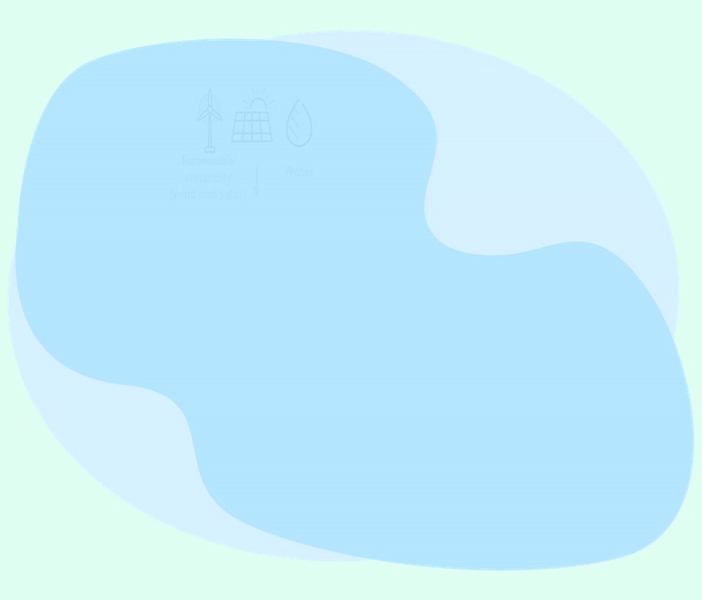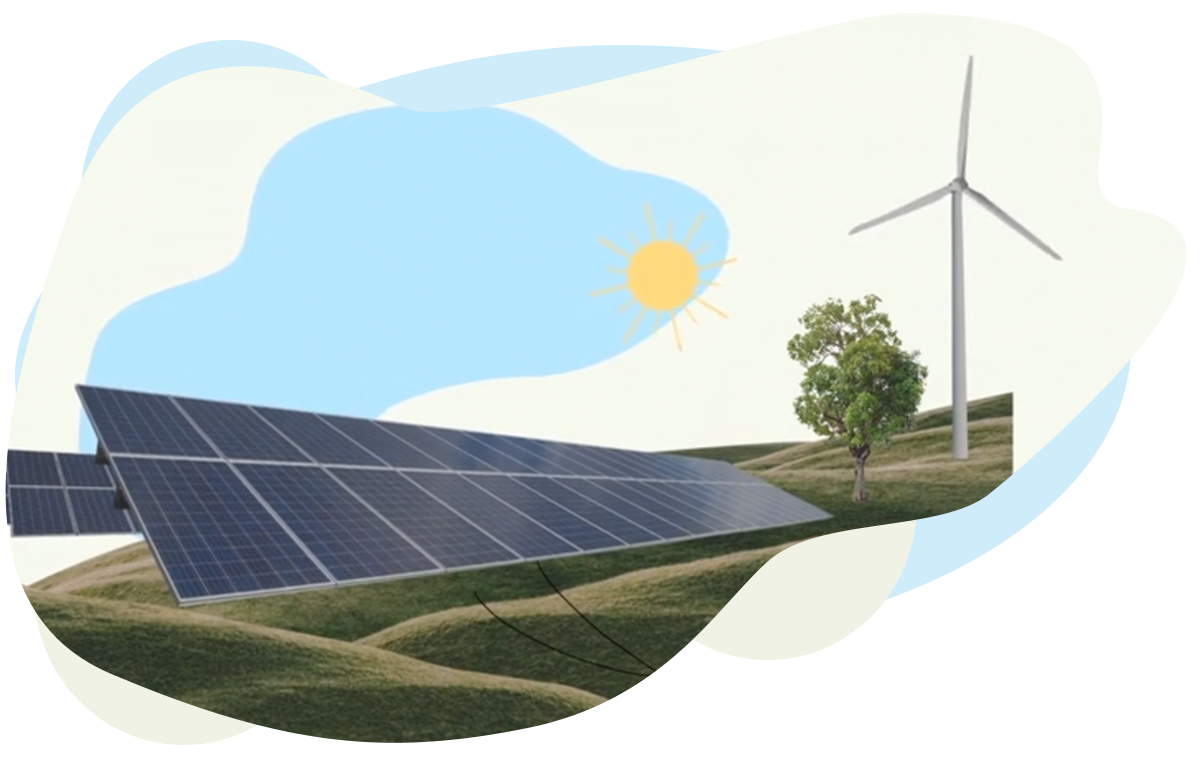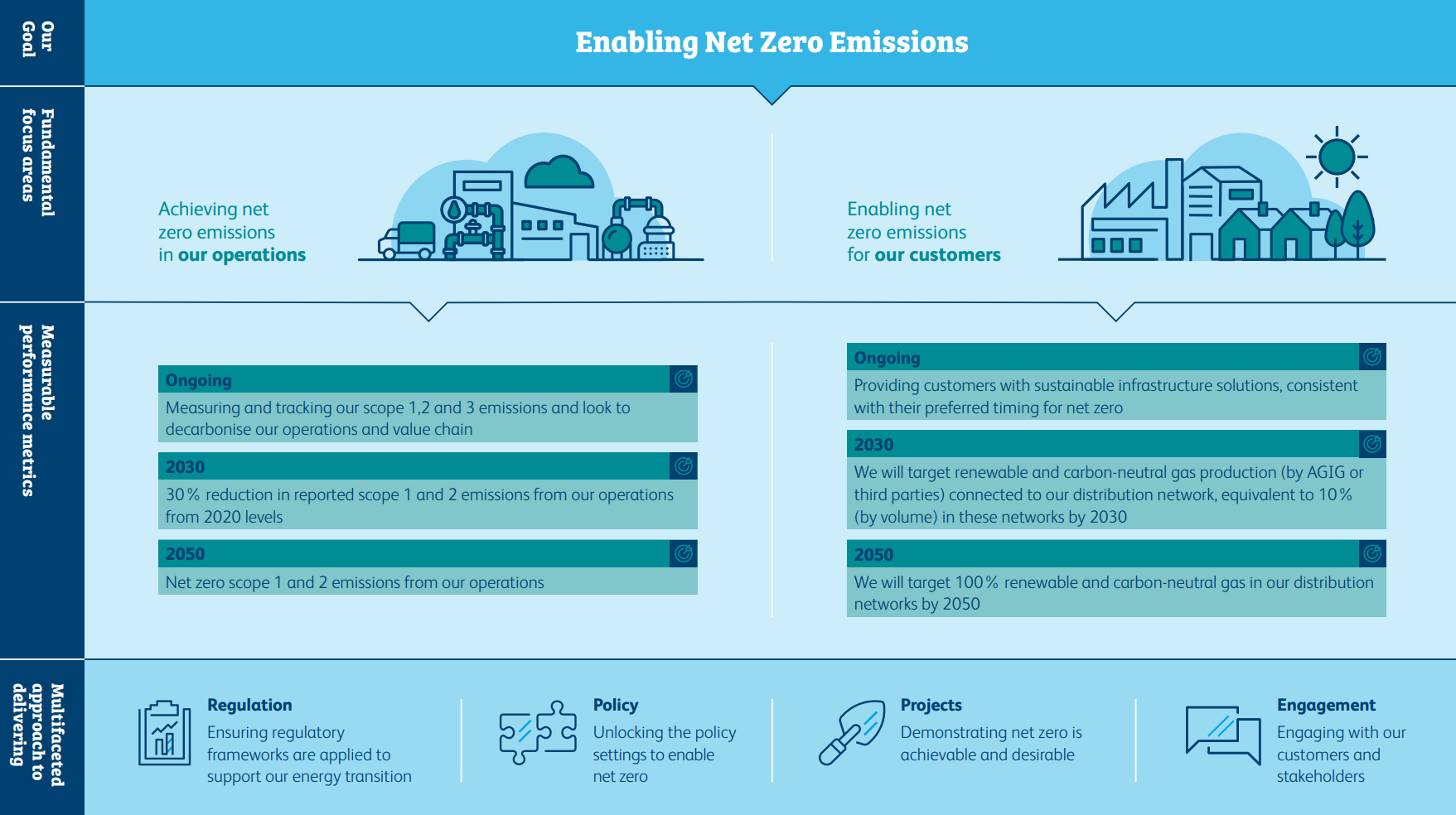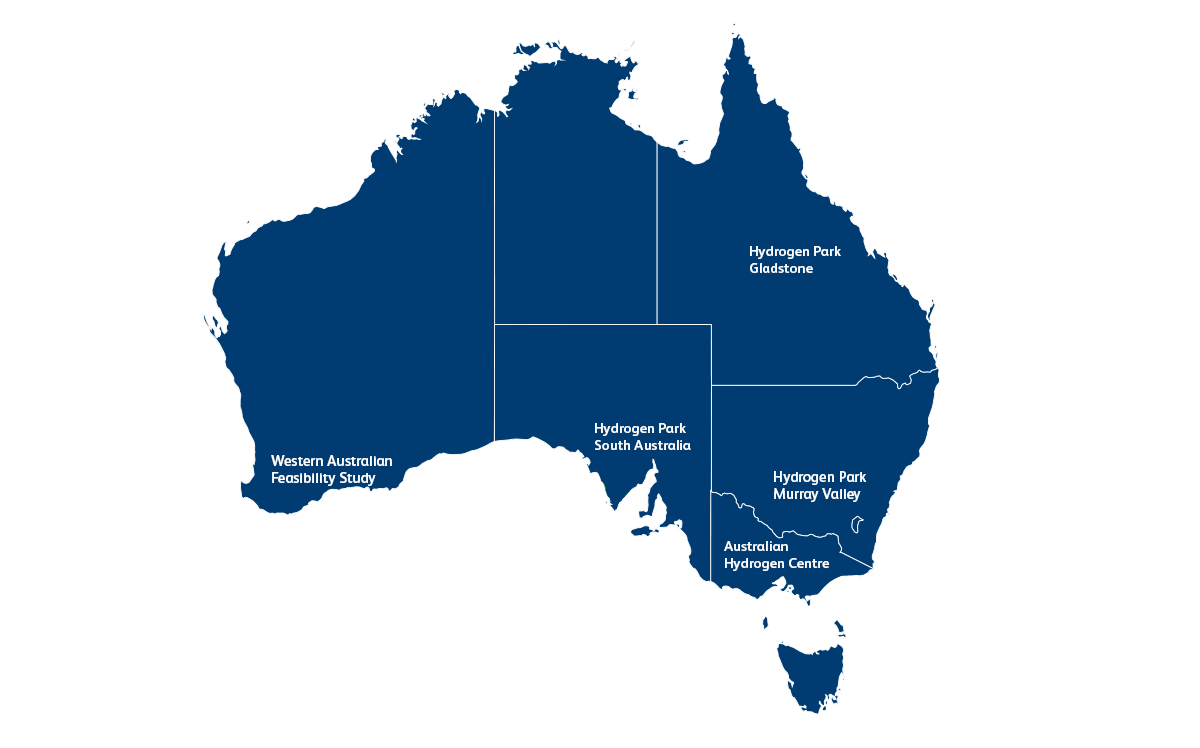Fault
1800 898 220
Our Vision as a business is to deliver infrastructure essential to a sustainable energy future. Learn about our plans to reduce carbon emissions in the gas network by transitioning to 100% renewable gas.

There’s nothing you need to do right now – so you can keep enjoying the things you love
Gas supplies almost half of Australia's household energy, and already has a much lower carbon intensity than grid electricity, but there is more to do.
We’ll keep working in the background to decarbonise your gas, so you won’t have to change the way you heat your home, use hot water or cook your food.


Renewable and carbon-neutral gases such as renewable hydrogen and biomethane can be used in the same way as natural gas is today, but do not result in additional carbon emissions to the atmosphere. By blending and ultimately replacing natural gas with renewable gas we can use our existing infrastructure to supply renewable gas to our customers. It also means customers retain their choice of energy supply, and those industries relying on gas can continue to access it.
Learn more

TARGETED NET EMISSIONS BY 2050
6.5 MILLION AUSTRALIAN HOUSEHOLDS ENJOY GAS
KEEP ENJOYING GAS IN YOUR HOME
A RELIABLE SOURCE OF ENERGY
*LOWEST COST DECARBONISATION
AN IMPORTANT FUTURE FUEL
Renewable gas is a term used to describe gases that do not produce any additional carbon emissions in their production and use. Common forms of renewable gas include renewable hydrogen and biomethane which can be used in the same way as natural gas is today.
Renewable hydrogen does not contain any carbon and can be produced using water and renewable electricity, meaning the entire process is carbon free.
Biomethane is carbon neutral - it harnesses the energy potential from organic materials such as landfill gas, agricultural waste and sewage, supporting the circular economy.
By blending and ultimately replacing natural gas with renewable gas we can use our existing infrastructure to supply renewable gas to our customers. It also means customers retain their choice of energy supply, and those industries relying on gas can continue to access it.
Our Net Zero Ambition is:
Whilst emissions from the use of gas delivered by AGIG infrastructure is not classified as scope 1, 2 or 3 emissions for AGIG, our Net Zero Ambition emphasises going beyond our direct responsibilities to support our customers in their efforts to reduce emissions.
We are targeting net zero scope 1 and 2 emissions across all our operations by 2050, with an interim aim to reduce our reported scope 1 and 2 emissions by 30% from 2020 levels by 2030.
That’s why we aim to facilitate customer access to renewable or carbon-neutral gases, at volumes equal to 10% of the gas delivered through the distribution network. Our aspiration is for 100% renewable or carbon-neutral gas in our distribution networks by 2050.
AGIG is already investing in projects that demonstrate the pathway to a low-carbon future. We are building renewable gas production facilities and preparing new and existing assets, for future fuel and carbon transport and storage.

The appliances sold in Australia are designed to operate efficiently and effectively with natural gas. They are tested with varying gas compositions to account for the varying sources of natural gas supplied around Australia. One such “limit” gas contains 13% hydrogen, and therefore all certified household gas appliances sold in Australia have undergone a range of safety tests with this level of hydrogen.
Consistent with this and with our own appliance testing program*, we are confident that your existing home appliances will work safely, reliably and effectively with up to 10% hydrogen blends and potentially even higher - with international projects supplying up to 20% hydrogen blends.
*Compatibility of end user equipment with future fuels (RP1.4) Archives - Future Fuels CRC
When receiving 100% renewable hydrogen gas, new appliances or burner parts may be required.
100% hydrogen appliances are in use throughout Australia and the world today – we have hydrogen barbeques that we use at community events – but at the moment they are niche product whilst the market establishes itself. Appliance manufacturers are already working on hydrogen ready appliances that will easily transition from natural gas to hydrogen gas.
Our Low Carbon Ambition outlines our plans to supply 10% renewable gas by 2030 before starting the conversion to 100% renewable gas. The timing of 100% conversion (post 2030) is aligned with when many appliances will be able to be replaced as part of their natural retirement cycle which will also contribute to a smooth transition.
We understand that price is very important to our customers.
At the moment producing renewable gas is a new industry in Australia and is more expensive than natural gas.
Just like solar, wind and battery power, in order to drive down costs we need to develop projects and increase scale. We are doing this with the support of Governments, who are providing project funding in order to ensure customers do not bear added costs. Consistent with this, customers receiving blended gas as part of our Hydrogen Park South Australia and Hydrogen Park Gladstone projects will pay no more than if they were receiving 100% natural gas.
Modelling indicates that renewable hydrogen and biomethane can be produced at prices equivalent to natural gas by 2030 if not before. This is consistent with the Federal Government targets of “H2 under $2 per kg”. At this time we will look to begin conversion of our networks to 100% renewable gas.
Today Australia’s energy system relies on diverse sources of energy – natural gas and liquid fuels (petrol and diesel) are used for more than double the energy provided by electricity. It’s important that as we move towards net zero emissions we continue to use diverse sources of energy – if we don’t maintain diversity we risk developing a more costly and less reliable energy system overall. Importantly modelling indicates that decarbonising natural gas through renewable hydrogen can be up to 50% cheaper than electrification as it avoids significant investment in additional electricity infrastructure such as poles, wires and additional batteries.
You do not need to do anything. We are working with industry and governments across Australia to deliver the renewable gas future.
To start we are delivering demonstration projects. Hydrogen Park South Australia commenced in May 2021 and is delivering volumes of up to 10% renewable hydrogen to about 4000 homes in the nearby suburb of Mitchell Park, while Hydrogen Park Gladstone is currently being developed and will deliver up to a 10% renewable hydrogen blend to the Gladstone gas distribution network in Queensland in 2023.
We will then move to large scale blending as we target 10% renewable gas across our networks by 2030, this includes through Hydrogen Park Murray Valley which was recently awarded funding by the Australian Renewable Energy Agency and will deliver up to a 10% renewable hydrogen blend to more than 40,000 customers in Wodonga and Albury.
We are targeting conversion of our existing networks from 10% to 100% renewable gas from 2030. At this point a change to hydrogen appliances may be required, we are working with appliance manufacturers to make sure this occurs as smoothly as possible.
We are committed to engaging with the community. When renewable gas projects are developed in your community we will let you know.
Renewable gas is here now. Hydrogen Park South Australia commenced in May 2021 and is delivering volumes of up to 10% renewable hydrogen to about 4000 homes in the nearby suburb of Mitchell Park. Hydrogen Park Gladstone is currently being developed and will deliver up to a 10% renewable hydrogen blend to the Gladstone gas distribution network in Queensland in 2023.
This is just the start. Ultimately we are targeting volumes of up to 10% renewable gas across our networks by 2030 and 100% renewable gas by 2040 as a stretch target.
For business and industrial customers you can be confident that your connection to the gas network will provide you with the energy you require and also help you transition to a low carbon future
Our current plans are to blend volumes of up to 10% renewable hydrogen by 2030. This 10% blended gas remains consistent with the Australian Specifications for natural gas. Beyond 2030 we will look to convert to 100% renewable gas, which may require some change to appliances, work is already underway with the appliance sector to make this transition as smooth as possible.
We are committed to engaging with the community. When renewable gas projects are developed in your area we will let you know well in advance to ensure any questions you may have are answered.
Hover over the green dots to discover how we’re making the renewable gas future a reality

Commencing production in May 2021, and expanded in March 2023, HyP SA delivers a 10% (by volume) renewable gas blend to more than 3,700 gas customers across Adelaide’s south in the suburbs of Mitchell Park, Clovelly Park and parts of Marion. It also supplies the transport and industry sectors via tube trailer (long storage tubes on the back of semi-trailers).
Learn MoreHyP Gladstone is currently in construction. Gladstone will be the first city in Australia where the entire gas distribution network will supply customers with a blend of up to 10% (by volume) of renewable gas. It is expected that blending will commence in 2024.
v Learn MoreEstablished in 2019, the AHC is a joint industry and Government research centre delivering feasibility studies focused on blending 10% hydrogen into existing gas distribution networks and converting networks to 100% hydrogen in South Australia and Victoria. Studies were completed in 2023 and can be found on ARENA’s Knowledge Bank.
Learn MoreThe Western Australian Feasibility Study determines the suitability of the Dampier to Bunbury Pipeline to introduce hydrogen into its mix. Completed in 2021, the study includes both technical assessment and development of a roadmap to support development of industry regulation.
Learn MoreDeveloped by Australian Gas Infrastructure Group, HyP Murray Valley is a $65.46m project supported by the Australian Renewable Energy Agency, the Victorian Government and the Clean Energy Finance Corporation. HyP Murray Valley will see the development of a 10 MW electrolyser and associated equipment to produce renewable hydrogen.
Learn More
Gas is essential to our economy and modern lifestyles, supplying almost half of Australia’s household energy. But there is more we can do. As a business we are responding, taking active steps to sustainable gas delivery today and tomorrow. On our distribution networks, we are targeting volumes of 10% renewable gas by volume by 2030. Our aim is to transition our distribution networks to 100% renewable gas by 2040 as a stretch target and by no later than 2050. This is consistent with Australian state and territory ambitions which collectively target being net zero carbon by 2050.
